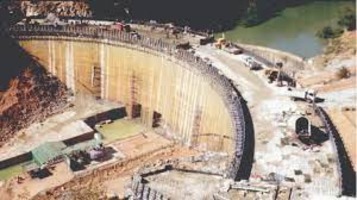The construction of crucial dams like Kunzvi and Gwayi-Shangani speeds up, which aim to bolster water supplies to Harare and Bulawayo. The persistent water challenges in many suburbs of these cities have led to recurring outbreaks of diarrheal diseases.
Deputy Minister of Lands, Agriculture, Fisheries, Water, and Rural Development, Davis Marapira, emphasized the government’s commitment to completing these major dam projects. The focus is on ensuring an adequate water supply for domestic use and irrigation in these urban areas.
Marapira explained the strategy: “We used to do 13 dams at a time, now we want to finish Kunzvi dam and Gwayi-Shangani, then we focus on other small dams. We better finish the bigger ones and move on. Kunzvi is now around 45 percent complete, and Gwayi-Shangani is above 70 percent. Currently, we are focusing on those two major dams.”
Functions of both Gwayi-Shangani Dam and Kunzvi Dam
Gwayi-Shangani is set to provide water for irrigation and supply Bulawayo, while Kunzvi Dam’s primary purpose is to ensure Harare has a stable water source. Additionally, these dam projects are expected to stimulate agricultural production, provide potable water, support mini-hydro power initiatives, and harness existing water bodies, aligning with the Second Republic’s vision to transform Zimbabwe into an upper-middle-income economy by 2030.
The Government, through the Zimbabwe National Water Authority (Zinwa), plans to construct 15 high-impact dams across the country. Gwayi-Shangani Dam, with a capacity of 691 million cubic liters, is a key component of this endeavor, designed to serve both irrigation and Bulawayo’s water needs.
Residents in these cities have welcomed the initiative, recognizing its potential to alleviate poverty and hunger, create jobs, and improve overall living conditions. The dams are expected to support not only agriculture but also tourism, fishing, and food security.
Moreover, the project reflects the government’s commitment to investing in strategic water resources, thereby reducing the reliance on rain-fed agriculture and providing support to food-insecure communities through irrigation and fisheries. The accelerated construction of these vital dams is seen as a crucial step in addressing the water challenges faced by Harare and Bulawayo and ultimately improving the lives of the people in these urban areas.
Read also The European Union allocates $120 million for the rehabilitation of the Kariba Dam.

Leave a Reply